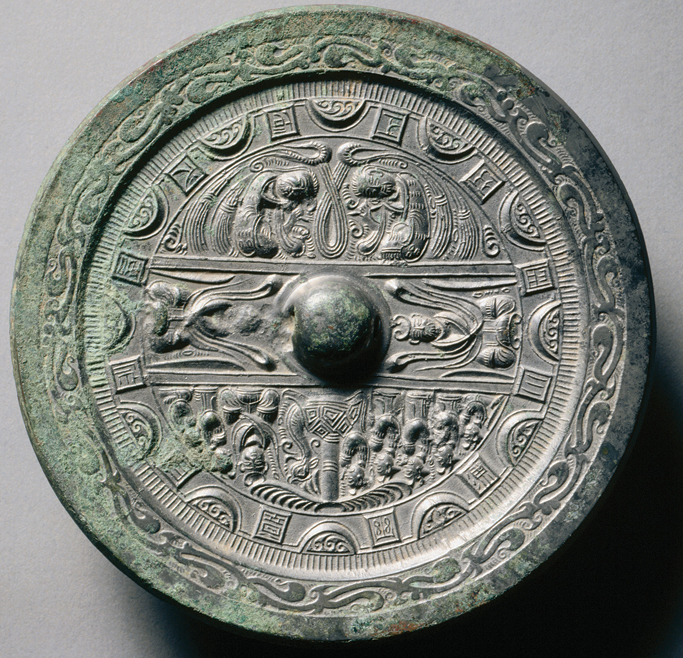A History of World Societies:
Printed Page 181
A History of World Societies Value
Edition: Printed Page 178
Han Intellectual and Cultural Life
In contrast to the Qin Dynasty, which favored Legalism, the Han came to promote Confucianism and recruit officials on the basis of their Confucian learning or Confucian moral qualities. The Han government’s efforts to recruit men trained in the Confucian classics marked the beginning of the Confucian scholar-
However, the Confucianism that made a comeback during the Han Dynasty was a changed Confucianism. Although Confucian texts had fed the First Emperor’s bonfires, some dedicated scholars had hidden their books, and others had memorized whole works: one ninety-

Han art and literature reveal a fascination with omens, portents, spirits, immortals, and occult forces. Emperor Wu tried to make contact with the world of gods and immortals through elaborate sacrificial offerings of food and wine, and he welcomed astrologers, alchemists, seers, and shamans to his court. He marveled at stories of deities such as the Queen Mother of the West and the Yellow Emperor, who took his entire court with him when he ascended to the realm of the immortals. Much of this interest in immortality and communicating with the spirit world was absorbed into the emerging religion of Daoism, which also drew on the PHilosophical ideas of Laozi and Zhuangzi (see “Daoism” in Chapter 4).
A major intellectual accomplishment of the Han Dynasty was history writing. Sima Qian (145–
Lu people are customarily cautious and miserly, but the Ping family of Cao were particularly so. They started out by smelting iron and in time accumulated a fortune of a hundred million cash. All the members of the family from the father and elder brothers down to the sons and grandsons, however, made a promise that they would “Never look down without picking up something useful; never look up without grabbing something of value.” They traveled about to all the provinces and kingdoms, selling goods on credit, lending money and trading. It was because of their influence that so many people in Zou and Lu abandoned scholarship and turned to the pursuit of profit.2
From examples like these, Sima Qian concluded that wealth has no permanent master: “It finds its way to the man of ability like the spokes of a wheel converging upon the hub, and from the hands of the worthless it falls like shattered tiles.”3 For centuries to come, Sima Qian’s work set the standard for Chinese historical writing, although most of the histories modeled after it covered only a single dynasty. The first of these was the work of three members of the Ban family in the first century C.E. (See “Individuals in Society: The Ban Family.”)
The circulation of books like Sima Qian’s was made easier by the invention of paper, which the Chinese traditionally date to 105 C.E. Scribes had previously written on strips of bamboo and wood or rolls of silk. Cai Lun, to whom the Chinese attribute the invention of paper, worked the fibers of rags, hemp, bark, and other scraps into sheets of paper. Paper, thus, was somewhat similar to the papyrus made from pounded reeds in ancient Egypt. Though much less durable than wood, paper was far cheaper than silk and became a convenient means of conveying the written word. Compared to papyrus, it depended less on a specific source of plant fiber and so could be produced in many areas.